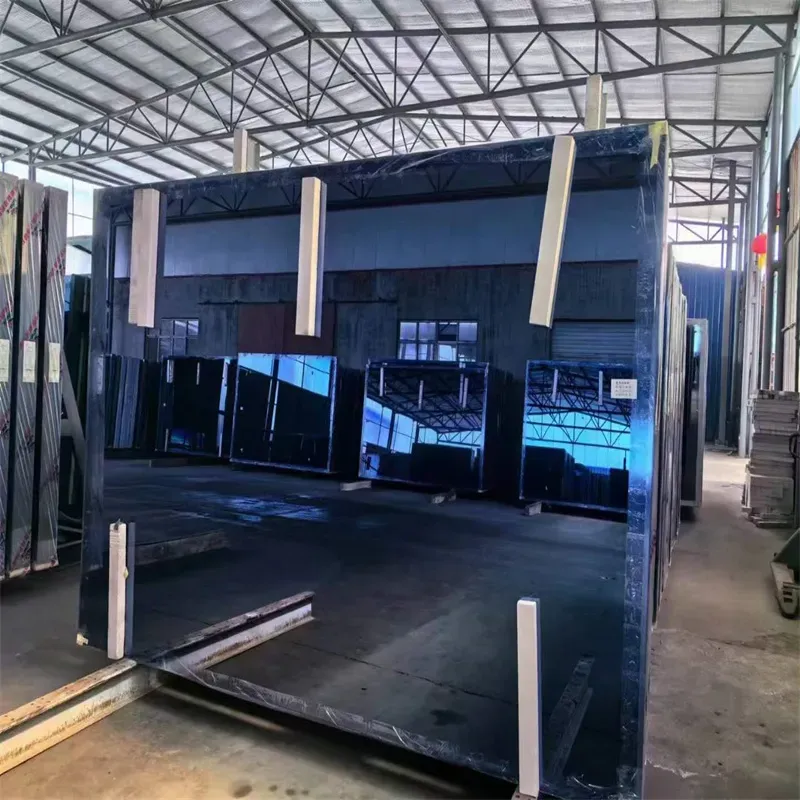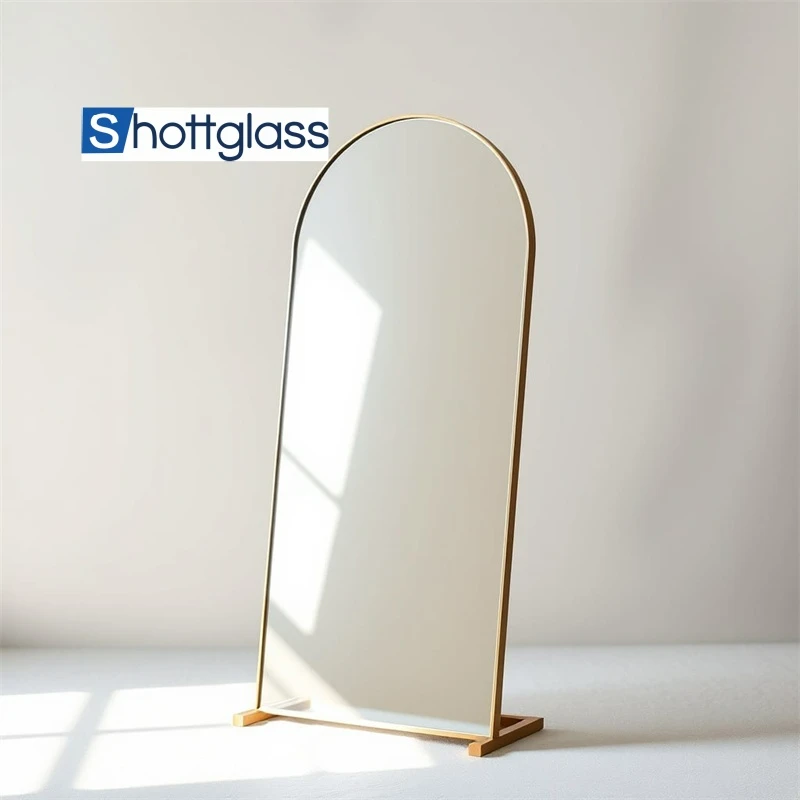Apr . 09, 2025 16:41 Back to list
Different Types of Frosted Glass and Their Applications
Frosted glass is a modified glass product designed to provide translucency while obscuring clear visibility. The treatment process alters the surface texture of standard glass, creating a diffused effect that softens light transmission and enhances privacy. This material has become essential in both architectural and interior design applications due to its functional and aesthetic benefits. Manufacturers employ various techniques to produce different types of frosted glass, each with distinct visual and structural properties. The three primary categories include acid-etched frosted glass, frosted sandblasted glass, and reflective frosted glass. Each type serves specific purposes across residential, commercial, and industrial settings.
Acid Etched Frosted Glass
Acid-etched frosted glass is manufactured through a chemical process where hydrofluoric acid is applied to the glass surface. This treatment creates a smooth, semi-opaque finish with a uniform appearance. Unlike mechanical abrasion methods, acid etching produces a finer texture that feels almost velvety to the touch. The level of opacity can be precisely controlled by adjusting the acid concentration and exposure time, allowing for varying degrees of light diffusion.
One of the primary advantages of acid-etched glass panels is their resistance to dirt accumulation. The non-porous surface prevents dust and grime from adhering as easily as with textured alternatives, making maintenance straightforward. This characteristic makes them particularly suitable for high-hygiene environments such as hospitals, laboratories, and kitchens. Additionally, they are often used in office partitions, shower enclosures, and display cabinets where clarity and privacy must be balanced.
Customization is another key benefit of acid-etched glass patterns. By using stencils or digital printing techniques, manufacturers can create intricate designs where frosted and transparent sections contrast elegantly. This method is frequently applied to acid-etched glass windows in upscale hotels, corporate buildings, and residential properties to add decorative flair without sacrificing functionality. The ability to incorporate logos, geometric shapes, or artistic motifs makes this type of glass a preferred choice for branding and interior embellishment.
Frosted Sandblasted Glass
Frosted sandblasted glass is produced by blasting the glass surface with fine abrasive materials such as aluminum oxide or silicon carbide at high pressure. This mechanical process creates a textured, matte finish that scatters light more aggressively than acid etching. The resulting surface is slightly rough, which can be adjusted in coarseness depending on the desired level of opacity and aesthetic effect.
The durability of sandblast frosted glass makes it ideal for high-traffic areas where wear resistance is essential. Common applications include entry doors, elevator interiors, and public partitions. The textured surface also provides improved grip, making it a practical option for stair railings, shower screens, and glass flooring where slip resistance is a concern.
In commercial settings, frosted sandblasted glass is often used for privacy screens in conference rooms and healthcare facilities. The degree of frosting can be tailored to allow natural light while preventing direct visibility, ensuring a balance between openness and seclusion. Additionally, sandblasting can be combined with etching techniques to produce gradient effects, where the opacity transitions smoothly from clear to fully frosted, offering dynamic visual solutions for modern architecture.
Reflective Frosted Glass
Reflective frosted glass merges the diffusing properties of frosted glass with a metallic or tinted coating to enhance light control and energy efficiency. Two prominent variations include black reflective glass and blue reflective glass, which are widely used in contemporary building designs.
Black reflective glass windows are popular in corporate and high-end residential projects due to their sleek, modern appearance. The reflective coating reduces glare and minimizes heat absorption, contributing to improved thermal insulation. This makes them an energy-efficient choice for facades in sunny climates. Additionally, the dark tint provides enhanced privacy during daylight hours while maintaining outward visibility from the interior.
Similarly, blue reflective glass windows are often selected for their aesthetic appeal and functional benefits. The blue tint offers a cooler visual tone compared to black, making it suitable for coastal or minimalist architectural styles. Like its black counterpart, it helps regulate indoor temperatures by reflecting a portion of solar radiation. These windows are commonly installed in commercial buildings, luxury homes, and retail spaces where both style and performance are prioritized.
The selection of frosted glass depends on the specific requirements of a project, whether prioritizing aesthetics, durability, or energy efficiency. Acid-etched frosted glass excels in decorative applications with its smooth finish and customizable patterns. Frosted sandblasted glass provides a robust solution for high-use environments with its textured surface and enhanced grip. Reflective options such as black reflective glass and blue reflective glass combine privacy with solar control, making them ideal for modern architectural designs. By understanding the distinct properties of each type, designers and architects can make informed decisions to achieve both functional and visual objectives.

-
Types of Reflective Glass
NewsNov.17,2025
-
What Is Dichroic Glass?
NewsNov.17,2025
-
Smart LED mirrors can have touch controls
NewsNov.17,2025
-
Laminated glass improves energy efficiency
NewsNov.17,2025
-
Insulated glass enhances building comfort
NewsNov.17,2025
-
Acid etched glass offers elegant privacy
NewsNov.17,2025
Related PRODUCTS














